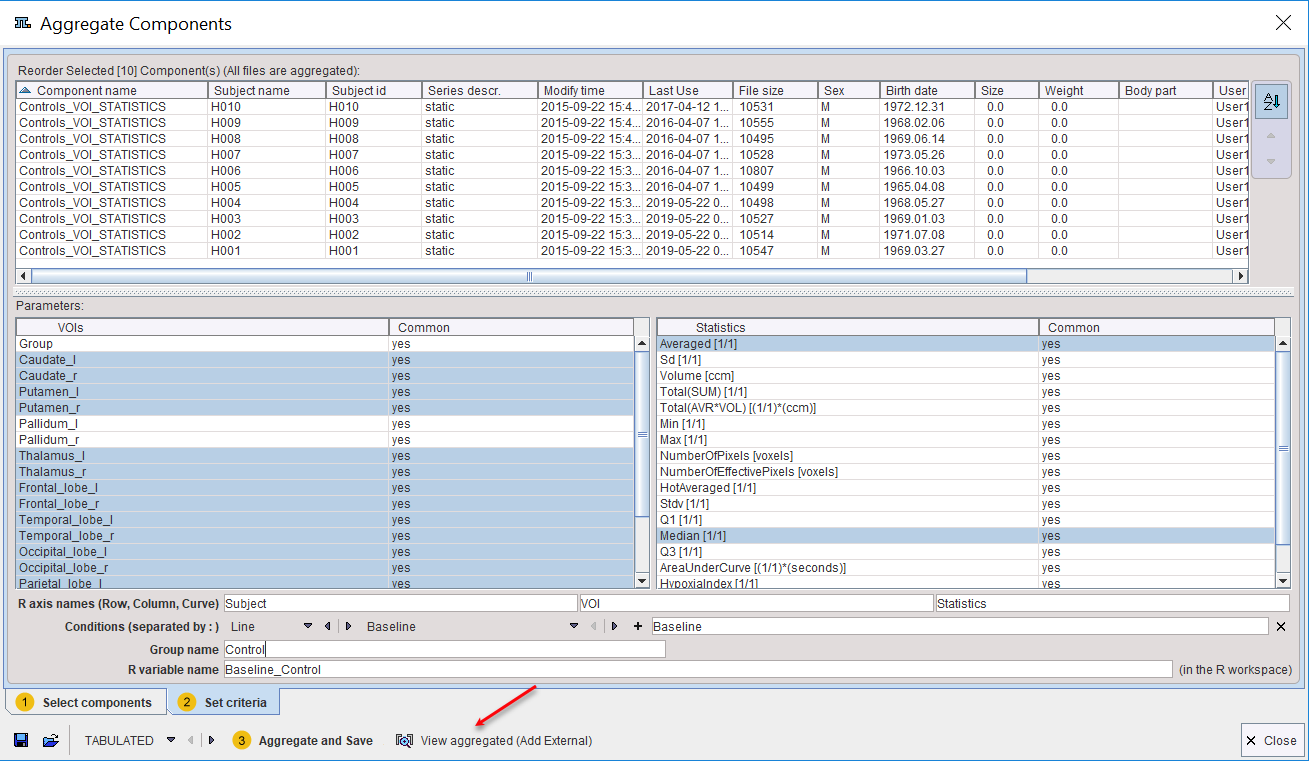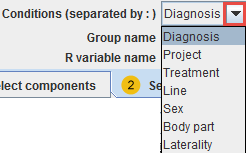Select the 2 Set Criteria pane to move on to defining the information parts to be included in the aggregate.

The upper list consists of the data sets selected in the prior step. This list is mainly for information. The elements can be sorted or reordered, but no entries can be removed or added.
Selection of the Aggregate Information
The lower Parameters area shows the list of VOIs used for the statistics to the left, and the calculated Statistics to the right. Note the Common column. A Yes entry indicates that the VOI/Statistics is available in all data sets. Correspondingly a No entry indicates that the information is missing in at least one of the data sets. If the information is still used despite of the No indication, a NaN value will be entered in the aggregated to signal the absence of useful information. NaN values are disregarded in the statistics script provided in the R console.
In the left list select the VOIs to be included in the aggregate, and in the right list the Statistics.
Encoding Group and Condition Information
The lower part of the window serves for providing information which will be useful when using the aggregates for statistics.
The aggregation will generate a three-dimensional data set, which will be represented in the R console as a table indexed by Row and Column, and each table element is a vector and therefore called Curve. The three R axis names fields allow defining the names of the three dimensions, which for VOI statistics default to Subject, VOI and Statistics.
The Conditions and the Group name lines serve for generating a code describing the current aggregate. The rational is, that the subjects of a group may be studied in different conditions, or that different types of analysis are performed.

The way to generate the condition string is to enter a string in the left field, and then activate the + button. As soon as the condition is defined it is assigned automatically to the the R variable name field.
Additional conditions can be defined: e.g the laterality (Left). As a result the string is appended to the current condition with a preceding " : ".

Since the condition string has to be consistent among aggregates, there are lists for generation pre-defined strings. The first list serves for choosing the condition group.

Consequently the elements of the second list are populated and can be selected.
The Group name definition, when specified and confirmed with the Enter key button from the keyboard is appended to the R variable name field.
The condition and the group definitions are saved together with the aggregated file.
The R variable name can be edited and the name will be use when transferring the aggregate to the R console.